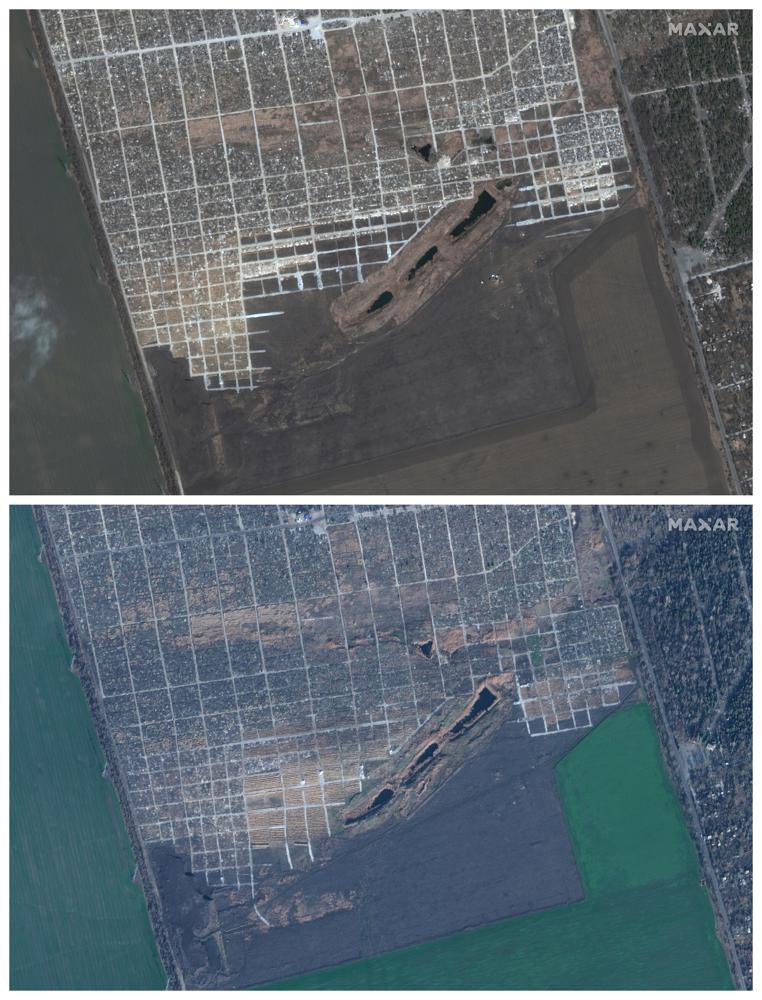Why you can’t compare casualties in Ukraine and Gaza
The UN's tally is being done with methods that are rendered meaningless in the realities of Russia's war against Ukraine. Nevertheless, it continues to be reported as if it was the real casualty rate The post Why you can’t compare casualties in Ukraine and Gaza appeared first on Euromaidan Press.

A recent New York Times article has claimed that the number of women and children killed in Gaza over 46 days of Israeli attacks have exceeded the number killed in Ukraine after nearly two years of Russia’s war. As troubling as the scale of civilian suffering in Gaza is, it is simply impossible to compare this number with Ukraine.

1. Gaza tolls are unconfirmed; Ukraine tolls are verified
The casualty rate in Gaza is provided to the UN from the Gaza Ministry of Health. And although New York Times cites experts who claim that “aggregate death tolls reported by the Gaza Health Ministry have typically proved to be accurate,” they are nonetheless less rigorous than the ones provided by the UN Human Rights Monitoring Mission for Ukraine.
According to Vyacheslav Likhachev, former senior fellow at the UN Human Rights Monitoring Mission in Ukraine, which was deployed to Ukraine to report on the deaths from the war with Russian proxies in eastern Ukraine since 2014, comparing tallies for Gaza and Ukraine is an “obvious manipulation.”
“Its data on losses in the Russian-Ukrainian war (on both sides of the contact line) for 2014-2022 is indeed the most complete, accurate, and reliable. It is so, because the Mission by default does not consider possible to trust the data of the official bodies of any of the parties to the conflict, and checks every message,” Likhachev says, stressing that the death tolls from the Russian proxy administrations in eastern Ukraine could be trusted no more than the Ministry of Health of the de facto Hamas government in Gaza.
“The standard of proof adopted by the Mission is very high. It requires documentary confirmation of each specific case and verification of the identity of each victim. In a situation of a low-intensity armed conflict, when field teams were able to go to the site of each shelling of a civilian object, document each case, interview the victims (in the case of those who were injured), witnesses, or close relatives of the dead – it all worked. And it was precisely because of the standard of proof that this whole system stopped working after 24 February 2022.”
2. Current UN approach in Ukraine is “inadequate”
After Russia’s full-scale invasion of Ukraine, the previous methodology does not work anymore, as vast territories are outside of its reach, and verifying the identities in mass graves are problematic. Despite this, the UN mission continues using its old approach, “ignoring the absurdity and inadequacy of this approach,” Likhachev says.
“As a result, after making enormous efforts, it was possible to document many cases after de-occupation in Kyiv, Chernihiv, Sumy, and later Kherson and Kharkiv oblasts. The consequences of shelling of populated areas at a distance from the front line, etc., are recorded. But, for example, the victims of the siege of Mariupol are not taken into account in these statistics at all,” Likhachev says.
He notes that the example of Mariupol is sufficient to illustrate that the UN statistics “do not really reflect anything and does not correspond to anything at all”: it is in this city that, according to some estimates, 87,000 people were killed in the first months of the Russian siege. The real number will probably always remain unknown, as the Russians are likely to conceal the true scale of their atrocities, following their Chechnya playbook.
3. Reports indicate much higher death tolls in Russia’s war against Ukraine
Let’s take the same example of the seaside city of Mariupol, which was under relentless Russian bombardment between February-May 2022.
Ukrainian authorities say that they have confirmed 22,000 victims. Petro Andriushchenko, advisor to the mayor of Mariupol, says that this figure is based on numerous contacts that city council officials maintained with officials who remained in Mariupol. However, he believes that the actual number could be much higher.
In December 2022, the Associated Press estimated 10,300 new graves near Mariupol by analyzing satellite imagery.

Human rights defenders give a higher estimate. The Kharkiv Human Rights Group, working with Ukrainians who managed to escape Russian-occupied Mariupol, has gathered evidence of 100,000 killed and submitted this evidence of Russia’s genocide of Mariupolites to the International Criminal Court in The Hague.
“We were not able to establish the exact figure at that time, but we used indirect methods, based on subtracting from the total population of Mariupol those residents whose evacuation or transfer to Russian territory was confirmed, or some other data that allowed us to subtract them from the population. And we came up with a figure of about 100,000 people, meaning that these people were killed,” Mykhailo Romanov, an expert of the Kharkiv Human Rights Group said.
He noted that people in Mariupol were killed in different ways, by different methods, using different weapons, but in any case, these were murders.
Finally, the abovementioned number of 87,000 killed Mariupolites was submitted by a civic volunteer citing records of local morgues.
While these numbers admittedly are not established through rigorous UN methods, they nevertheless point to the death tolls from Russia’s war being much higher than the UN’s 10,000 officially reported deaths of civilians in Ukraine.
A French journalist from France TV Moscou managed to film a cemetery in Mariupol where are more than 3000 new graves. This is still only one of those journalists who were allowed to Mariupol by Russian occupiers.pic.twitter.com/t9Bj32CDn3— Euromaidan Press (@EuromaidanPress) June 10, 2022
As for Ukraine’s official data, in February 2023, Ukraine’s chief war crimes prosecutor mentioned 100,000 killed civilians, more than ten times the official death toll.
4. The UN data on Ukraine casualties is being taken at face value despite the disclaimer
The UN Human Rights Monitoring Mission consistently voices that their data is incomplete, and the Office of High Commissioner for Human Rights notes, for instance: “OHCHR believes that the actual figures are considerably higher, as the receipt of information from some locations where intense hostilities have been going on has been delayed and many reports are still pending corroboration.”
Despite the disclaimer, Likhachev believes the mere voicing of the incomplete data has a misleading effect.
“The Mission, of course, was told that continuing to voice these data, even with all the disclaimers that they are incomplete, that these are only those cases that the Mission was able to document, means misleading the world audience. The disclaimer remains only in the footnote to the report itself, and the ‘statistics’ rushes further into the information space, losing all these hypocritical warnings. Unfortunately, the Mission persistently continues to engage in what is essentially a manipulation of information.
This is very sad. Please do not distribute this manipulation,” the former senior fellow of the Mission advises.
Related:
- 87,000 killed civilians documented in occupied Mariupol – volunteer
- Besieged Mariupol: How Russia obliterated a nearly half-million city in one month (photos)
- “Thin fingers raised like a final plea for help.” Exhuming the Izium massacre
The post Why you can’t compare casualties in Ukraine and Gaza appeared first on Euromaidan Press.



